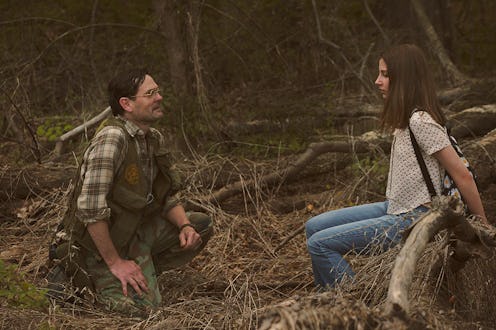Entertainment
How The Real ‘Girl In The Bunker’ Outsmarted Her Kidnapper & Brought Him To Justice

On Sept. 6, 2006, 36-year-old Vinson Filyaw abducted 14-year-old Elizabeth Shoaf and held her in an underground bunker for 10 days, according to The Guardian. Now, over 10 years since her ordeal, Lifetime is turning the story of her capture, abuse, and miraculous escape into a movie called Girl In The Bunker, premiering on May 28. But what happened to Elizabeth Shoaf's kidnapper? Where is Vinson Filyaw now?
Warning: This article contains information about sexual abuse, which some may find triggering.
According to WISTV, Filyaw was an unemployed construction worker who was already wanted on charges of sexually assaulting his common-law-wife's 12-year-old daughter, to which he later pleaded guilty. The Guardian reported that Filyaw is a survivalist and very familiar with the wilderness of Kershaw County, South Carolina, where he and Shoaf both lived, which explains why he was able to construct a hidden bunker and keep her hidden for as long as he did. "He's one that likes to get out and live off the land," described Kershaw County Sheriff Steve McCaskill to the outlet. "He's pretty savvy."
Per the local North Carolina newspaper, The State, Filyaw impersonated a police officer in order to handcuff and capture Shoaf. The kidnapper himself wrote an account of the events that transpired in the bunker, which detailed how chained Shoaf up and raped her repeatedly. Eventually, Shoaf was able to gain Filyaw's trust, convincing him that she cared about him and wanted to be there. She asked for his cell phone, pretending she wanted to use it to play games, and once Filyaw was asleep, Shoaf sent her mother the text message that would save her life and lead to Filyaw's capture.
Shoaf's message prompted heavy media coverage, and, according to People Magazine, Shoaf and Filyaw actually watched the news together, like the scene depicted in the Lifetime trailer. When Filyaw asked Shoaf what he should do, she instructed him to flee. “I told him he needed to leave because if they’d catch him, he would go to jail," Shoaf told People. He heeded her advice, but didn't make it far. According to CBS, authorities found Filyaw on I-20 near Columbia, North Carolina, just five miles from the bunker where Shoaf was found. Filyaw had attempted to hijack a car, and police were alerted to his whereabouts when the woman who was driving the car called 911. Although Filyaw was armed with a knife, a pellet gun, and a taser, he did not resist arrest.
Per CNN, Filyaw's extensive list of charges included "kidnapping, criminal sexual conduct with a minor, impersonating a police officer, trespassing and two counts of maintaining or possessing a destructive or explosive device." He pleaded guilty to all charges before going to trial, and received a 421-year sentence with no chance of parole. Filyaw is still alive in 2018 and serving that sentence.
The Washington Post reported that Judge G. Thomas Cooper, who passed down the sentence, said to Filyaw, "I have a strong belief you have forfeited your right to be a member of this society. I can think of no crimes short of murder more repulsive than these." Per the outlet, Shoaf herself was happy with the sentence, being that it was the maximum penalty which could be given out. The girl's parents, however, would have rather seen Filyaw punished more harshly. "To me it still ain't enough," said Shoaf's father, Don. "It should be a death penalty. He got what he got, but it's not enough to me. They told me not to but I wanted to fly across [the courtroom] and choke him."
Filyaw did make one statement by way of an apology to the Shoaf family before the court, as reported by The Washington Post. "There are no words or statement I could possibly give to undo the pain I have caused her and her family," he said, as his multiple life sentences were passed down.